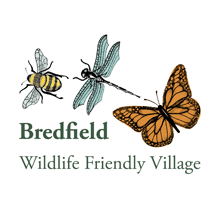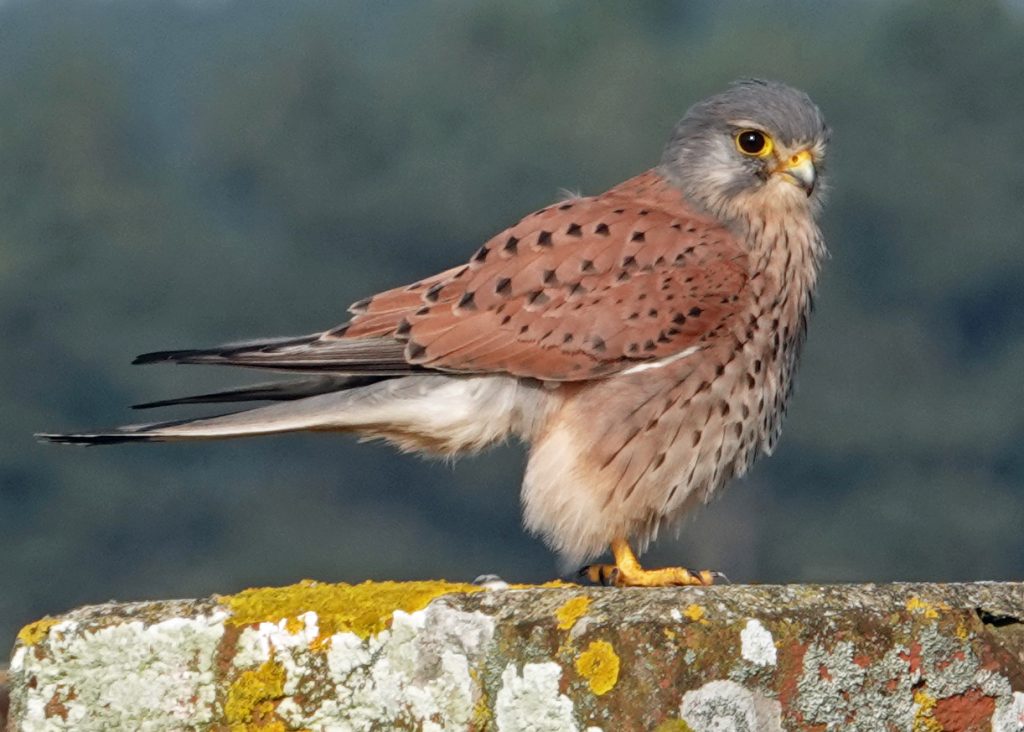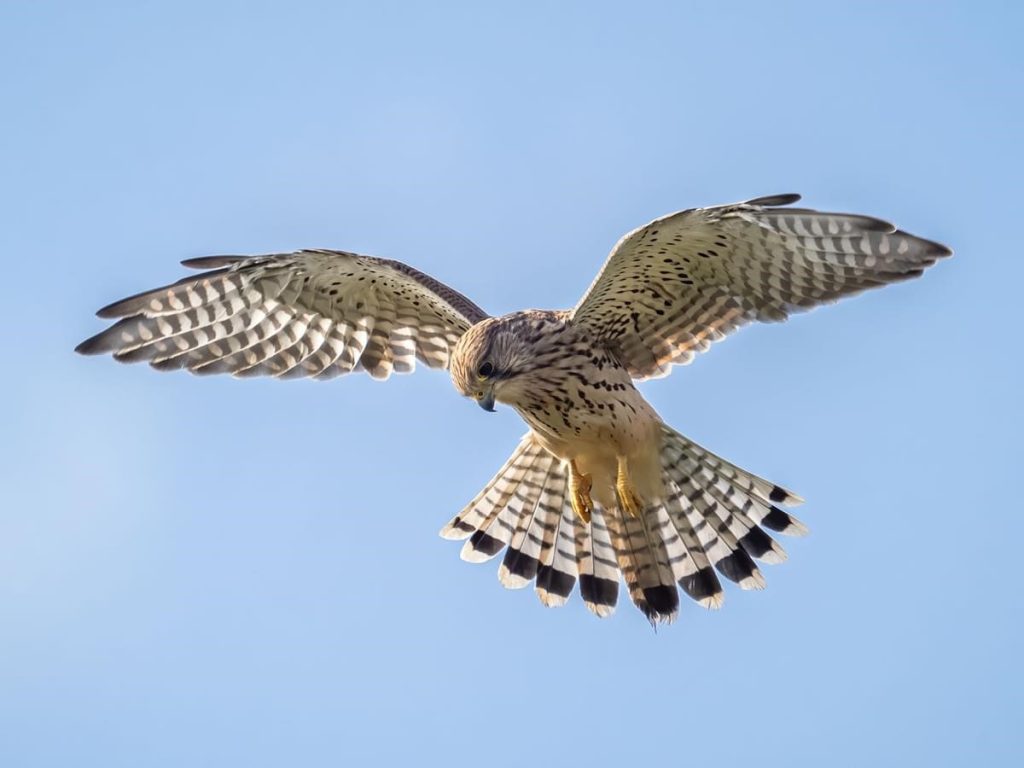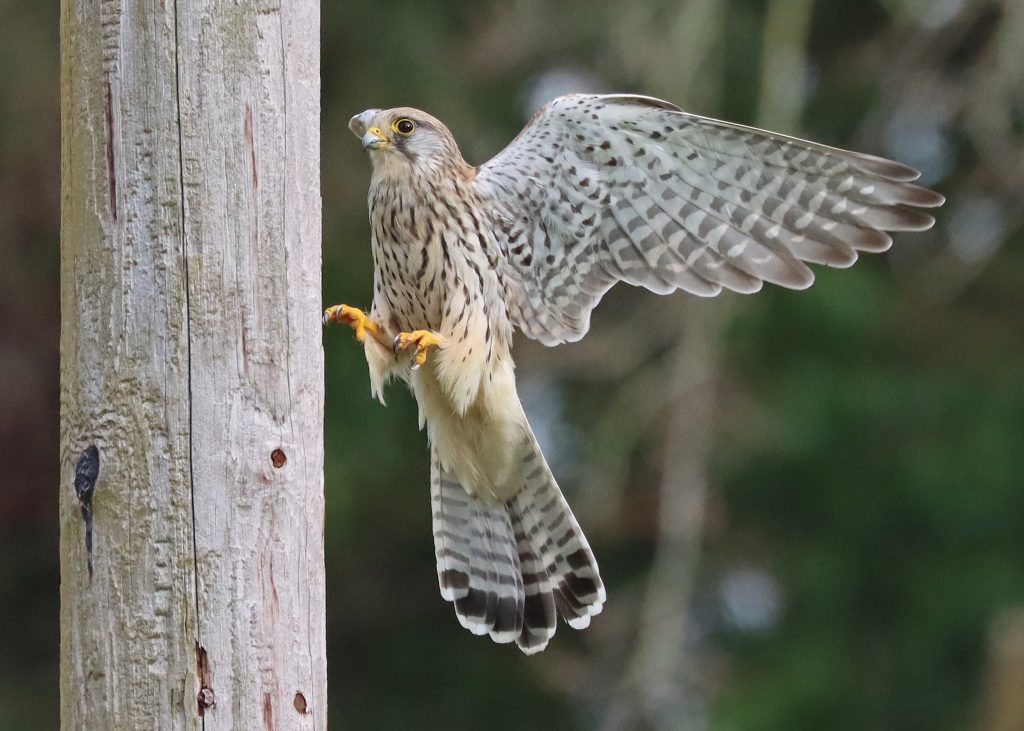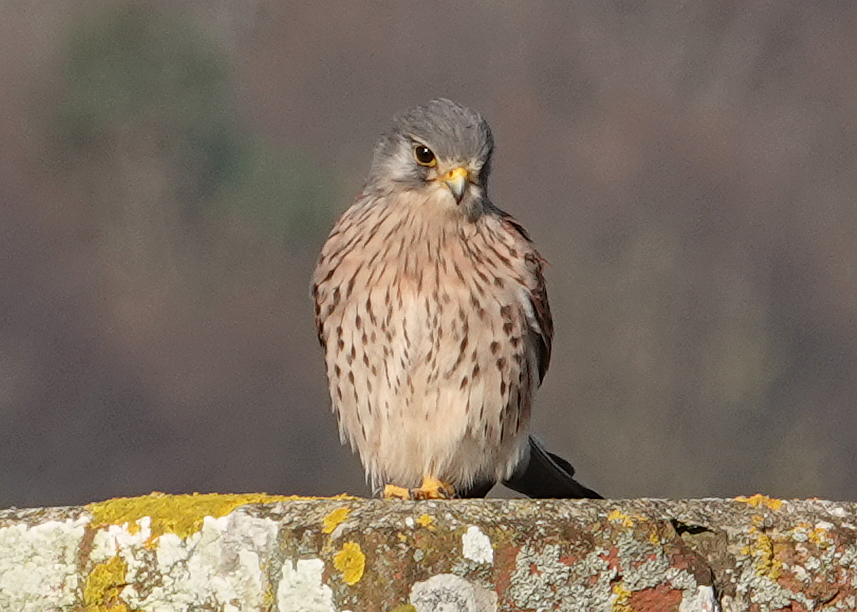The Book of St Albans[1] – a 15th century document on hawking, hunting and heraldry – ranks hawks and falcons into their suitability for particular social ranks. At the top, it states that an Eagle is fit only for an Emperor. At the bottom of the list, we find that the Kestrel is fit for only for a knave[2] – the lowest rank of servant. Today, when the public ranks its favourite creatures in nature, the Kestrel would likely be given a much higher ranking. The Kestrel is a familiar bird – you can watch it even from the comfort of your travelling car – and everyone is in awe of the bird’s ability to hover in the teeth of the wind and maintain an absolutely fixed position; suspended in the air with its head not shifting a millimetre and its eyes glued to the ground below. “Look at it! How does it do that?”
The Kestrel is a mid-sized falcon: smaller than a Peregrine; larger than a Merlin (both birds you are unlikely to see in Bredfield). It has pointed wings and a long tail. Male and female Kestrels have different plumages. The male has a chestnut back and wings with black spots; its head and tail are blue-grey; and its face has a grey moustache. The female is slightly larger than the male; the plumage of its upperside and tail is brown and markedly barred.
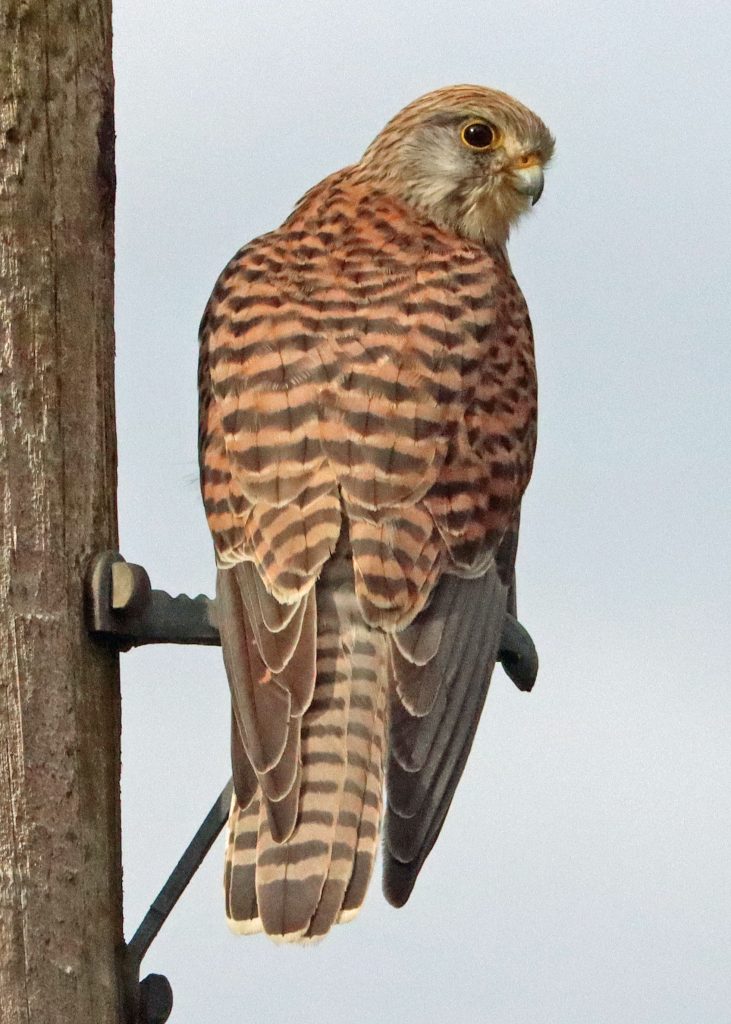
Female Kestrel 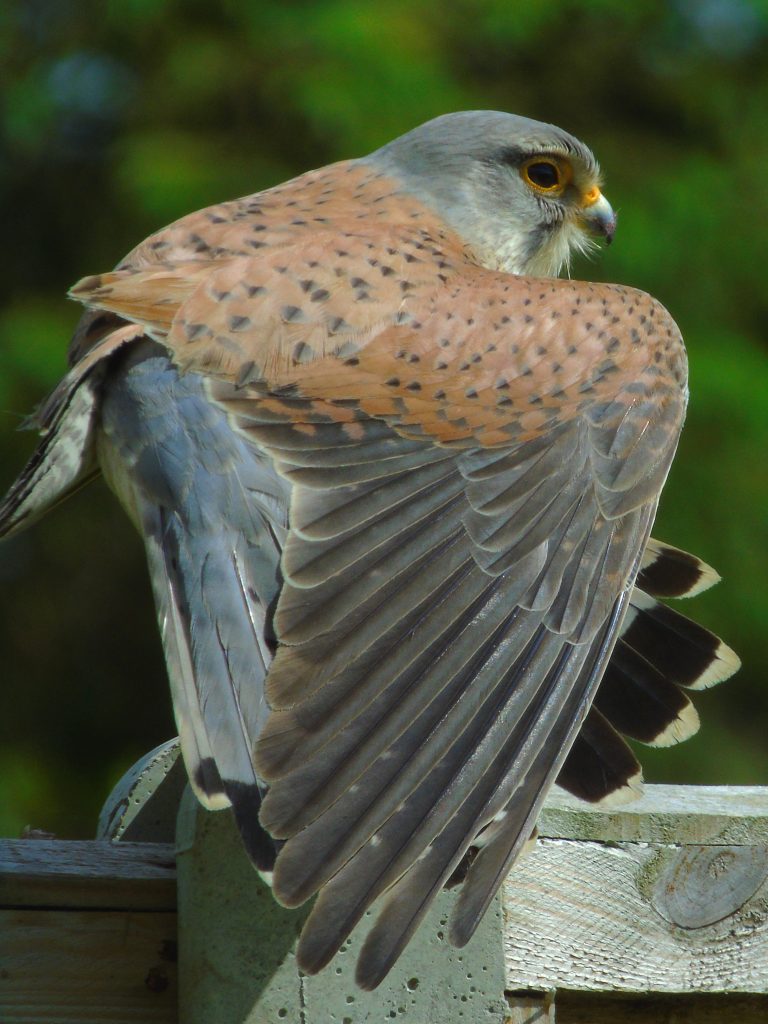
Male Kestrel preening
When seen fleetingly against the background of the sky, the above plumage features may be difficult to discern. How then, do you know that the bird you are seeing is a Kestrel? The pointed wings should be feature that you can pick out, but the clincher is that if a flying bird stalls to hover, you can be sure that you’re looking at a Kestrel. No other British bird of prey hunts in this manner; at least not with such agility and grace. If you see bird of prey with more rounded wings, flying with a ‘flap, flap, glide; flap, flap, glide’ style, you are probably looking at a Sparrowhawk – which is a fast, hedge-hopping stealth hunter of other birds.
Hovering, as Kestrels do, is a fine balancing act: countering and managing the forces of gravity, the wind and the momentum of their flight. It is easier for a Kestrel to hover where there is a fast onwards movement of air. Kestrels hover by flying into the wind at the same speed as the wind is blowing. Air flows under and over their angled wings providing an upwards buoyancy that counteracts the pull of gravity (the basic principle operating in all flying planes). Wind flow is never perfectly constant, so the birds steady themselves with complex changing movements of their wings and tail. When there is insufficient wind for this ‘hanging flight’, Kestrels must flap their wings continuously in manner that is calculated to maintain a stationary position. This continuous flapping is a much less efficient method for hunting and the bird cannot maintain its stationary position for quite as long as it can when able to hang on the wind.
Kestrels main prey are small mammals, especially mice, shews and voles (though they will catch large insects, worms and some ground-dwelling birds). Their main and unique hunting behaviour is to hover above their prey, then swoop down to catch the unsuspecting mammal with their sharp talons. Sometimes, Kestrels will adopt the less energetic option of hunting from a post or overhead wire. Mice, voles and shews can be very difficult to see, as they hide, creep and scurry under the cover of long grass and other vegetation. However, the Kestrel has excellent vision; about eight times stronger than humans. They are said to be capable of spotting a beetle from 50 metres. There is some evidence that Kestrels can see in the spectrum of ultraviolet light, and use this ability to survey an area for the urine trails left by small mammals. Combine this sight with the ability to hold its head absolutely stationery whilst hovering, and you have a top-class hunter.
Kestrels are monogamous and some pair-bond for life. Breeding begins in April or May, with just one brood (of three-or-more eggs) produced per year. The young leave the nest after about a month. Both parents feed the nestlings, and this continues for two-to-four weeks after the youngsters have left the nest. Kestrels nest in cavities in trees, buildings and cliffs, or they use abandoned nest of crows.
The Kestrel has inspired many a poem, but none finer than Gerard Manley Hopkins’ ‘The Windhover’[3]. His sonnet blends metaphysics with the keenest observations of bird behavior and its setting. In the central part of the sonnet – using a symbolic analogy with the training of a horse (‘rung upon the rein’) – Hopkins paints a picture of the hovering Kestrel and its subsequent flight away:
“High there, how he rung upon the rein of a wimpling wing
In his ecstasy! then off, off forth on swing,”
[1] ‘The Book of St Albans’, written by Dame Juliane Berners, published in 1486.
[2] Barry Hine’s book ‘A Kestrel for a Knave’ (1968) takes its title from the ‘hawking’ section of the Book of St Albans. Ken Loach’s film ‘Kes’ (1969) was based upon Hine’s book.
[3] Gerard Manley Hopkins, ‘The Windhover’ (1877)
All photographs taken by the author, except the image of a hovering bird c/o Birdfact.com
